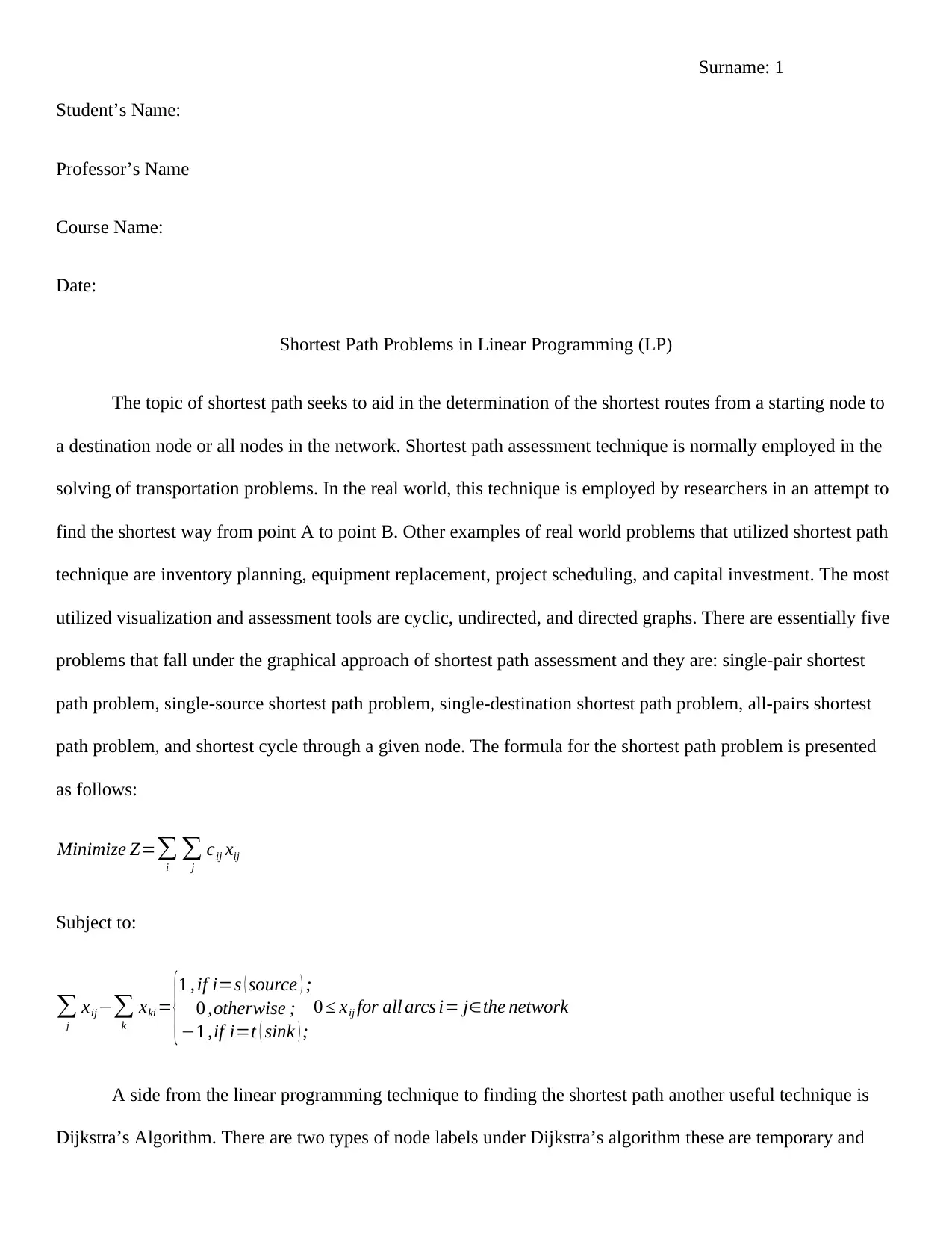Shortest Path Problem Analysis: Data Science Report - University
VerifiedAdded on 2023/01/18
|2
|346
|61
Report
AI Summary
This report examines the shortest path problem, focusing on its application in data science and related fields. It begins by outlining the problem itself, which involves finding the shortest route between a source and destination within a network, often represented by nodes and arcs with associated distances. The report then delves into the application of linear programming as a method for solving this problem, providing the relevant mathematical formulation. Additionally, it discusses Dijkstra's algorithm, another technique used to find the shortest paths, highlighting its two types of node labels (temporary and permanent) and its applicability in statistical programming environments like R-programming and R-studio. The report also touches upon real-world applications, such as transportation networks, and the use of cyclic, undirected, and directed graphs as visualization tools. The report concludes by emphasizing the relevance of these techniques in various scenarios, including inventory planning and project scheduling.
1 out of 2






![[object Object]](/_next/static/media/star-bottom.7253800d.svg)